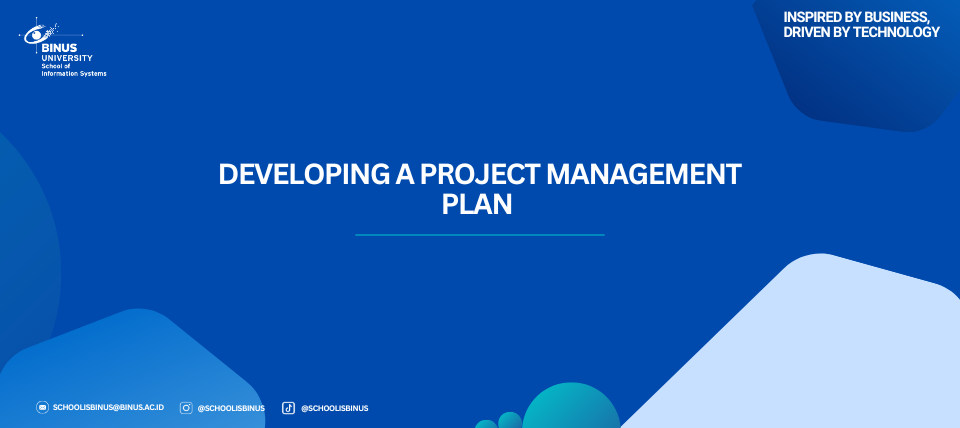Developing A Project Management Plan

Developing a project management plan is a crucial step in the project management process, as it serves as a comprehensive guide for executing and controlling the project. The process involves several key steps:
1.Gathering Inputs: The project manager collects necessary inputs, including:
Project Charter: This document outlines the project’s objectives, high-level requirements, and stakeholder agreements, providing a foundation for the management plan.
Assumption Log: This log records assumptions made during planning, which can impact project execution.
Enterprise Environmental Factors: These are external conditions that can influence the project, such as organizational culture and market conditions.
Organizational Process Assets: Existing policies, procedures, templates, and historical data that can inform the planning process.
2.Engaging Stakeholders: The project manager collaborates with stakeholders to gather their input and ensure their needs and expectations are considered in the plan.
3.Defining the Project Scope: Clearly outlining what is included and excluded from the project helps manage stakeholder expectations and prevent scope creep.
4.Establishing Baselines: The plan should establish baselines for scope, schedule, and budget, which serve as reference points for measuring project performance.
5.Documenting Management Processes: The plan should detail the management processes that will be used throughout the project, including risk management, change management, and communication strategies.
6.Review and Approval: Once the plan is drafted, it should be reviewed by key stakeholders and approved to ensure alignment and commitment.
Project Management Plan Contents
A comprehensive project management plan typically includes the following contents:
- Introduction/Overview: A high-level description of the project, including its purpose, objectives, and significance to the organization.
- Project Organization: Details about the project team structure, roles, and responsibilities of team members and stakeholders.
- Management and Technical Processes: Descriptions of the project lifecycle, development approach, and management processes that will be used throughout the project.
- Scope Statement: A detailed description of the project scope, including deliverables, boundaries, and acceptance criteria.
- Schedule and Budget Information: A timeline for project activities, including key milestones and deadlines, as well as a budget summary outlining financial resources required for the project.
- Risk Management Plan: Strategies for identifying, analyzing, and managing risks throughout the project lifecycle.
- Stakeholder Engagement Plan: A plan detailing how stakeholders will be engaged and communicated with throughout the project.
- Change Management Plan: A process for managing changes to the project scope, schedule, and budget, ensuring that all changes are documented and approved.
- Configuration Management Plan: Describes how project deliverables will be controlled and managed, including version control and documentation standards.
- Performance Measurement Baseline: This includes the scope baseline, schedule baseline, and cost baseline, which are essential for monitoring and controlling project performance.
Using Guidelines to Create Project Management Plans
Many organizations utilize guidelines to create project management plans, ensuring consistency and efficiency across projects. Here are some key points regarding the use of guidelines:
- Standardization: Following organizational standards or guidelines for developing project management plans helps streamline the process and ensures that all plans follow a similar format, making it easier for stakeholders to understand and navigate them.
- Templates and Tools: Project management software, such as Microsoft Project, often comes with template files that can serve as guidelines for creating project management plans. These templates can help project managers structure their plans effectively.
- Adapting to Project Needs: While guidelines provide a framework, it is essential to tailor the project management plan to the specific needs of the project. For example, a small project may only require a basic project charter and Gantt chart, while a large project may necessitate a detailed management plan with separate plans for each knowledge area.
- Compliance with Standards: In some cases, organizations may need to adhere to specific industry standards, such as the U.S. Department of Defense (DOD) Standard 2167 or the IEEE Standard 1058–1998 for software project management plans. These standards outline the required contents and formats for project management plans in specific contexts.
- Continuous Improvement: Organizations should regularly review and update their guidelines based on lessons learned from past projects. This practice helps improve the quality and effectiveness of future project management plans.

